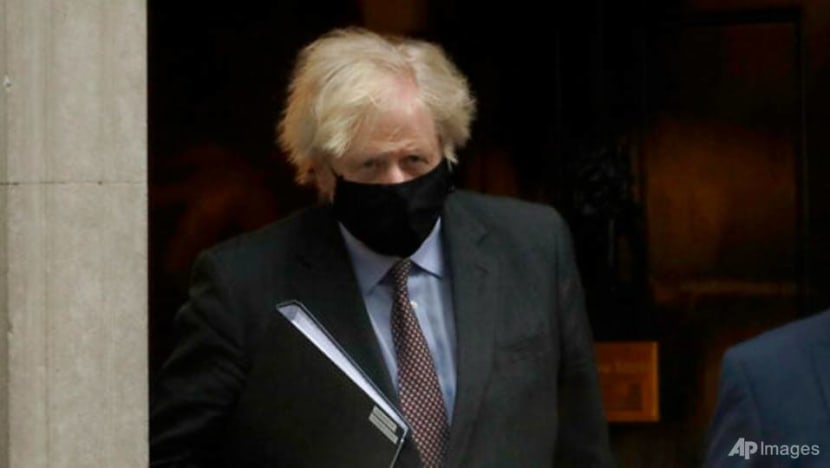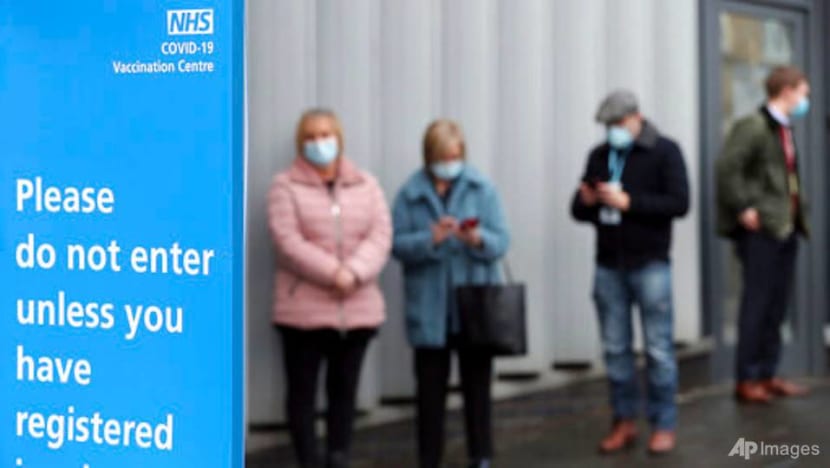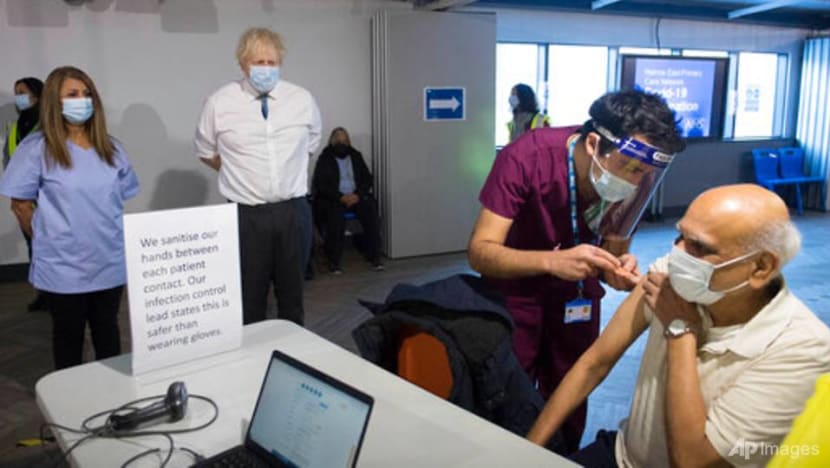Shops, haircuts return in April as UK lifts COVID-19 lockdown slowly

British Prime Minister Boris Johnson leaves 10 Downing Street to go to the Houses of Parliament in London on Monday, Feb 22, 2021. (Photo: AP/Matt Dunham)
LONDON: British Prime Minister Boris Johnson announced a slow easing of one of Europe’s strictest COVID-19 pandemic lockdowns on Monday (Feb 22), saying children will return to class and people will be able to meet a friend outside for coffee in two weeks’ time.
But those longing for a haircut, a restaurant meal or a pint in a pub have almost two months to wait, and people won’t be able to hug loved ones that they don’t live with until May at the earliest.
Johnson said the government's plan would move the country “cautiously but irreversibly” out of lockdown.
Britain has had Europe’s deadliest coronavirus outbreak, with more than 120,000 deaths. Faced with a dominant virus variant that scientists say is both more transmissible and more deadly than the original virus, the country has spent much of the winter under a tight lockdown. Bars, restaurants, gyms, schools, hair salons and non-essential shops are closed, people are urged not to travel out of their local area and foreign holidays are illegal.
That will begin to change, slowly, on Mar 8, when schools reopen and people are allowed to meet one friend or relative for a chat or picnic outdoors. Three weeks later, people will be able to meet in small groups outdoors for sports or relaxation.

Under the government plan, shops and hairdressers will reopen on Apr 12. So will pubs and restaurants, though only outdoors.
Indoor venues such as theatres and cinemas, and indoor seating in bars and restaurants, are scheduled to open May 17, and limited crowds will be able to return to sports stadiums. It is also the earliest date Britons may be allowed foreign holidays.
The final stage of the plan, in which all legal limits on social conduct are removed, is set for Jun 21. The government says the dates could all be postponed if infections rise.
The measures being announced apply to England. Scotland, Wales and Northern Ireland all have slightly different lockdowns in place, with some children returning to class in Scotland and Wales on Monday.
READ: UK's PM eyes end to COVID-19 lockdown as vaccines reach one-third of adults
READ: UK starting to restrict spread of COVID-19 variants, health secretary says
Hopes for a return to normality rest largely on Britain’s fast-moving inoculation program that has given more than 17.5 million people, a third of the country’s adult population, the first of two doses of vaccine. The aim is to give every adult a shot of vaccine by Jul 31, and to protect the over 50s and the medically vulnerable by getting them a first vaccine jab by Apr 15.
But the government cautions that the return of the country’s social and economic life will be slow. Johnson’s Conservative government was accused of reopening the country too quickly after the first lockdown in the spring and of rejecting scientific advice before a short “circuit breaker” lockdown in the fall.
It does not want to make the same mistakes again, although Johnson is under pressure from some Conservative lawmakers and business owners, who argue that restrictions should be lifted quickly to revive an economy that has been hammered by three lockdowns in the last year.
The Conservative government - in normal times an opponent of lavish public spending - spent £280 billion (US$393 billion) in 2020 to deal with the pandemic, including billions paying the salaries of almost 10 million furloughed workers.

Vaccines minister Nadhim Zahawi said the government’s plan for lifting restrictions was “steady as she goes”.
“Outdoor versus indoor, priority being children in schools,” he said. “Second priority is obviously allowing two people on Mar 8 to meet outside for a coffee to address some of the issues around loneliness.”
The government says further easing will depend on vaccines proving effective at lowering hospitalisation and deaths, infection rates remaining low and no new virus variants emerging that throw the plans into disarray.
Authorities are eagerly awaiting data on the impact of vaccination on infections, hospitalisations and deaths.
A Scottish study released on Monday found that the vaccination program had led to a sharp drop in hospitalisations. Scientists from the University of Edinburgh, the University of Strathclyde and Public Health Scotland found that in the fourth week after an initial dose, the Pfizer-BioNTech vaccine reduced hospital admissions by as much as 85 per cent and the Oxford-AstraZeneca vaccine shot cut admissions by up to 94 per cent.
Scientists said the results were encouraging, but cautioned that the study did not assess whether people who have been vaccinated can still pass COVID-19 on to others.
BOOKMARK THIS: Our comprehensive coverage of the coronavirus outbreak and its developments
Download our app or subscribe to our Telegram channel for the latest updates on the coronavirus outbreak: https://cna.asia/telegram










